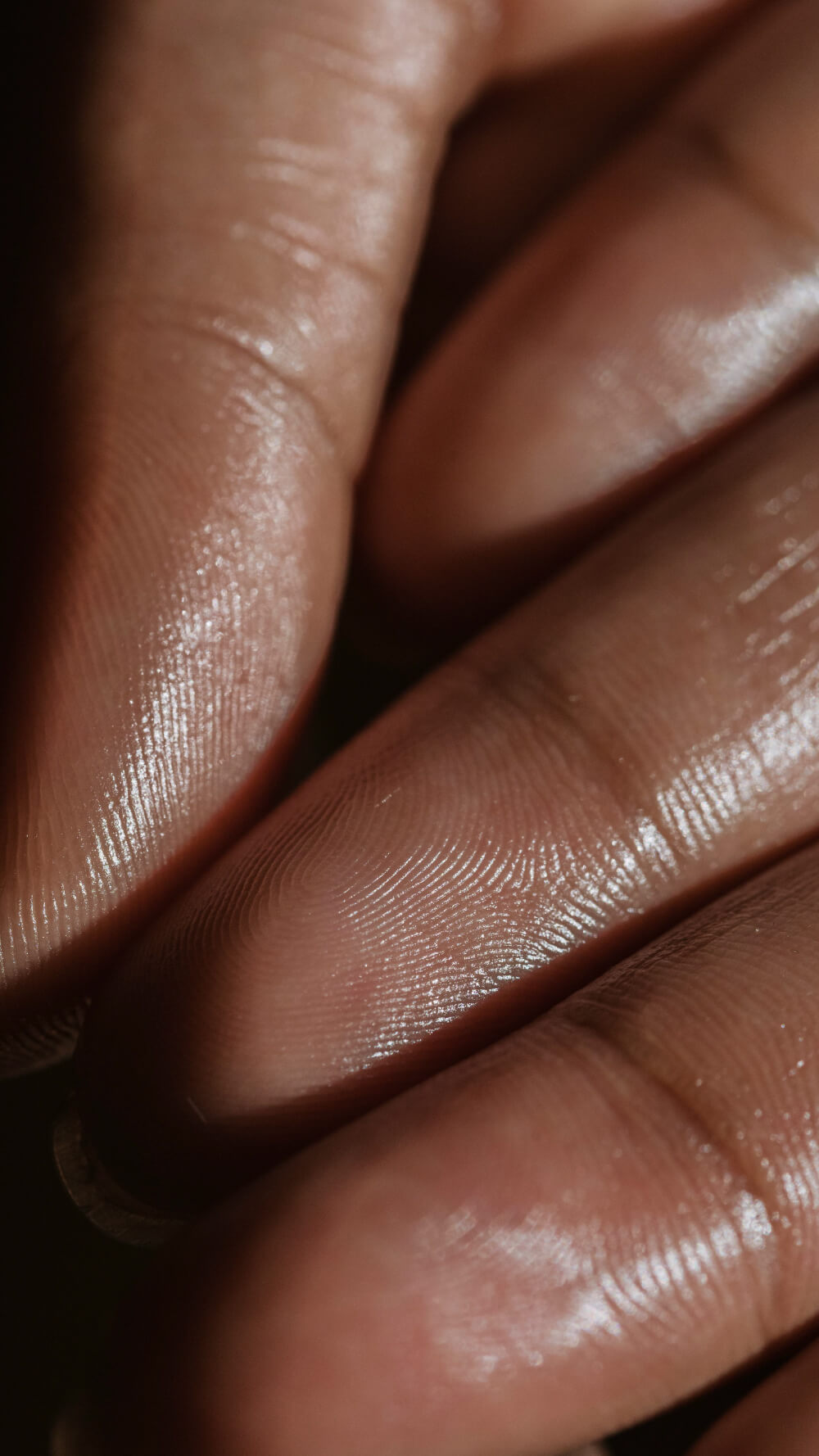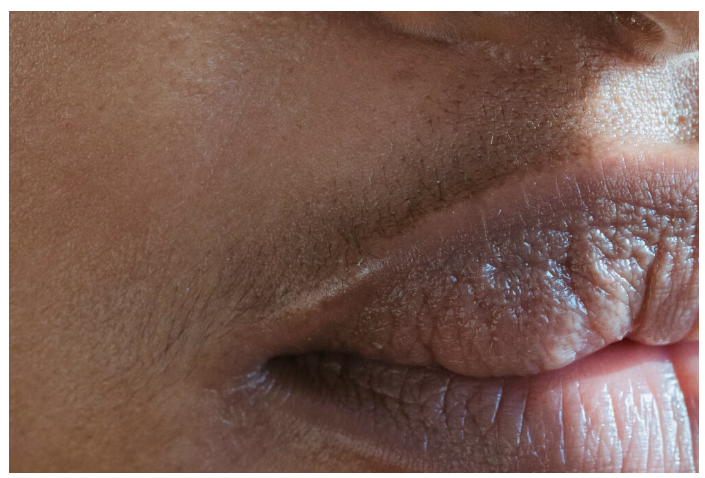Autologous fat grafting for natural fullness in the face and body

In brief
What motivates people to undergo autologous fat treatment?
What is autologous fat grafting?
Duration
from 45 min
Pain
none
Scars
ca. 3 mm
Stay
outpatient
Bandage
pflaster
Work
after 1 day
Sports
after 14 days
Costs
from € 900,-
What different methods are there?
Not all autologous fat is the same. In addition to determining the donor area (collection area), choosing the right processing method is essential for a perfect result. The recipient area determines the choice of harvesting method. If the autologous fat is used for volume, e.g. for lips or the nasolabial fold, microfat is used. Special suction cannulas with a diameter of just a few millimetres ensure homogeneous fat particles. If the skin quality is to be improved, we use nanofat. Using special filters, fat is reduced to such a small size that only the stem cells and cell fragments contained in it are transplanted.
Dark circles under the eyes or thinning skin areas are the areas of application here.

Who is autologous fat suitable for?
When is the best time?
Who is autologous fat not suitable for?
Autologous fat transplants are a good solution for replacing volume and improving skin quality. For complex structures, such as the lip contour, hyaluronic acid, for example, can generate better results. However, augmentation of the entire lips can be achieved with autologous fat.
Furthermore, in extreme athletes with a body fat percentage of around 7%, sufficient fat deposits are rarely found.

How does the autologous fat transplantation work technically?
During a detailed consultation at least 15 days before your planned procedure, we will discuss all the details of the procedure with you.
The areas to be treated will be locally anesthetized and marked. You will then feel no more than a slight pressure.
The fatty tissue is then carefully suctioned out and processed in a region-specific manner.
For transplantation, thin, blunt cannulas are used in different layers to ensure a harmonious fullness.
The puncture sites close automatically a few days after the procedure and are covered with a small plaster bandage for protection.
Surgical and conservative alternatives
There are various surgical and conservative alternatives for volume replacement and improving skin quality.
Artificially produced materials such as hyaluronic acid have become established for the targeted improvement of volume in smaller areas (e.g. lips or jawline). This is a synthetically produced gel that serves as a moisture reservoir and can provide shape and volume depending on its density. It influences the elasticity and firmness of the skin.
The improvement in skin quality can be achieved through minimally invasive procedures such as Morpheus8 or mesotherapy. The micro-injuries created activate the body’s own regeneration and thus increase the production of collagen and elastin. This leads to a noticeable and lasting improvement in skin quality. In addition, a tightening effect can be achieved through targeted radiofrequency.
What type of anesthesia is necessary?
Can the procedure be combined with other procedures?

Photos


Is this operation performed on an outpatient or inpatient basis?
Autologous fat transplantation is a minor outpatient procedure that is usually performed under local anesthesia.
A total of 2-3 hours should be scheduled. Even if the actual operation time is 45 minutes, the time for preparation and follow-up must be taken into account. Active participation in road traffic should be avoided at all costs for the first 12 hours. We recommend that you are accompanied for the first few hours after the operation and for the first night.
Risks and complications
Surgery is a wonderful routine for us.
Nevertheless, we are aware that many of our patients may only have surgery once in their lives. It is therefore essential that you are informed about all the possible consequences of this procedure.
During surgical procedures, skin and tissue as well as underlying structures are treated with sharp instruments. Despite all caution, complications of varying severity can occur. During the initial consultation, we will go through a corresponding information sheet with you.
Minor complications

Rare major complications
What to do in the event of complications?
Healing and progress
How long does the healing take?
Is the treatment painful?



“Wieder ein ausgezeichnetes Ergebnis der Botox-Behandlung! “
“I love Morpheus 8. My favorite!“
“Ich habe erheblich mehr Schmerzen nach dem Eingriff erwartet und war positiv überrascht wie gut es mir noch am selben Tag und jetzt an Tag 2 geht. Der Tag der...
“Ich war heute zum wiederholten Mal für eine Botox-Behandlung bei Dr.Lutfi und werde mich auch in Zukunft nur von ihm behandeln lassen. Sollte ich jemals andere...
“Kompetente und ausführliche Beratung und super Behandlung (Botox gegen Lachfalten). Bin mit dem Ergebnis sehr zufrieden und komme gerne wieder! “
When can the final result be expected?
What should patients plan?
A surgical procedure requires a certain amount of planning and organization not only for the surgical team, but also for the patient, both before and after the operation. It is important that you are well prepared and know what to expect. This allows you to concentrate fully on enjoying the results.
One of the most important questions before any surgical procedure is the “why”. You should be clear about why you want to have surgery in the first place. Once you have answered this question and made a decision, the following questions should definitely be clarified: How? By whom? When?
I will be delighted if you find your way to my surgery and would like to be operated on by me. However, I also recommend all my patients to get a second opinion. You should be absolutely certain about the date and surgeon.
Plan the time before your operation
Plan the time after your operation

How much does an autologous fat transplant cost?

Financing, down payment, installments
FAQ - Autologous fat
Autologous fat grafting is a procedure where fat is harvested from one area of your body and injected into another to add volume. Dr. Dani Lutfi ensures precise and aesthetically pleasing results.
Dr. Dani Lutfi is a highly experienced plastic surgeon known for his precise and natural results. He emphasizes personalized consultations and tailored treatment plans.
Recovery after autologous fat grafting with Dr. Dani Lutfi typically takes a few weeks. Modern techniques ensure minimal scarring and a swift return to daily activities.
Autologous fat grafting by Dr. Dani Lutfi enhances both the donor and recipient areas, resulting in a more balanced and youthful appearance. He provides expert and harmonious results.
Dr. Dani Lutfi uses advanced techniques and anesthesia to ensure the procedure is as pain-free as possible. Patients usually report only minimal discomfort during recovery.
Plastic surgery
- Home
- About Me
- Aesthetic surgery
- Aesthetic treatments
- Before After Archive
- Ordination
- For doctors
- Contact
- Cost

